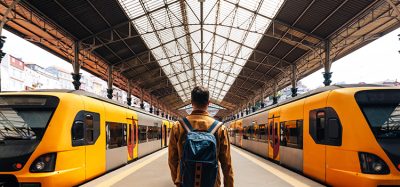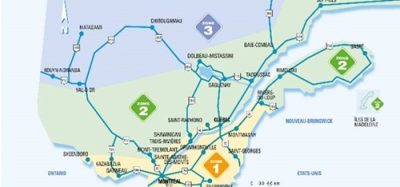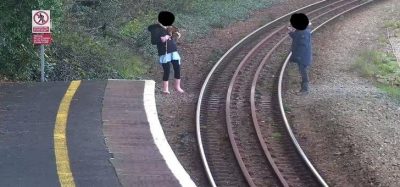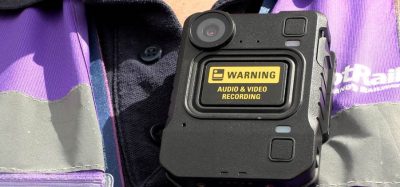Ensuring safety in the Fehmarnbelt Fixed Link rail and road tunnel
Posted: 1 October 2015 | | No comments yet
Safety for end-users is an integral part of any project, not least the project of building the 18.2km-long Fehmarnbelt Fixed Link between Fehmarn in Germany and Lolland in Denmark. It encompasses every aspect of the tunnel project. Apart from ensuring that all specific railway and general safety demands are met, there is also the challenge of adhering to high German, Danish and EU safety standards. Johnny Restrup-Sørensen, Contract Director for Railway at Femern A/S, explains how the demands actually help to achieve the goal of building a modern and very safe tunnel…
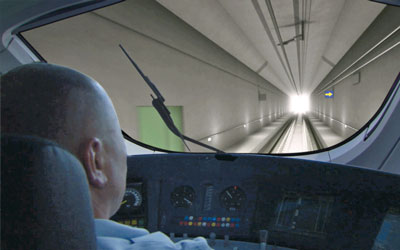

The fixed link will be the largest immersed combined rail and road tunnel in the world. It will also be among the world’s most modern and safe tunnels. Safety is always a high priority issue in railway systems and it’s well-known that rail is considered one of the most safe modes of transportation. Hence it is evident that safety is also an extremely important factor in such a long subsea railway link.
Safety has been incorporated into the project in detail – from the very first drawings when the treaty on the fixed link was signed by Denmark and Germany in 2008 – and up to the present day where bids for the tunnel from international consortia are being evaluated by the client, Femern A/S.
Safety influences all aspects of the tunnel from civil works requirements to the descent and curvature of the tunnel, emergency power supply, emergency exits, ventilation, fire extinguishing equip – ment, signalling systems, lighting, tunnel surveillance as well as rescue plans and safety personnel.
All relevant safety standards and regulations are met. This means complying with EU, Danish and German standards and regulations. These are apart from national standards and regulations, namely the EU Common Safety Methods (CSM), the National Reference Value (NRV), the EU Interoperability and safety directive, EU Eurocodes and the EU Tunnel Safety Directive.
The fact that the rail and road tube tubes are adjacent and connected by some 360 emergency exits opens up the possibility to apply a number of efficient safety-improving solutions; especially as they are designed to accommodate rescue operations and to allow the quick evacuation of train passengers.
The overall risk analyses performed by Femern A/S’ risk specialists shows that the actual risk of a serious accident happening in either the rail or road tunnel is lower than on open land.
General safety concept
The tunnel consists of five tubes: two for trains, two for cars – with dual, single direction carriageways and an emergency lane in each – and a separate tube or gallery between the road tubes which serves as an emergency and service corridor.
The basic idea concerning safety is to prevent any serious accidents happening at all. And if any do occur, to have comprehensive emergency systems and services able to respond quickly to any conceivable situation.
The safety concept rests on the following four pillars:
- Minimising the number of accidents – through their prevention and avoidance of potentially hazardous situations.
- Reducing the consequences of accidents and near-miss incidents as much as possible.
- The provision of escape routes – it must be easy for anyone inside the tunnel to reach a point of safety.
- Provision of effective emergency service access.
Rail and road interaction
The railway part of the tunnel consists of two tunnel tubes that will each carry traffic in one direction. For its design, the EU technical specifications of interoperability (TSI), European standards and national safety requirements are applied. These – for example the TSI Safety Railway Tunnels (SRT) – combined with codes of practice contain the mandatory safety requirements for railway tunnels.
The railway line is designed for mixed traffic with a maximum speed of 200km/h. The maximum operational speed of freight trains is set to 140km/h. Freight trains up to 1,050m-long are planned to be allowed and passenger trains are expected to be 400m-long. Most of the time in normal operation there will only be one train at the time in a tube.
The road part consists of two tubes each with one way traffic on double lanes and a full emergency lane. For its design, European standards – namely the EU road tunnel safety directive – as well as national safety requirements are applied.
Between the two road tubes there is a service gallery that also serves as an evacuation tube. Apart from specific rail and road tunnel demands, there are a number of demands for the tunnel construction in general. For example, structural collapse due to ships sinking, corrosion, structural failure, fire and explosions has been addressed through the structural design. EU Eurocodes are followed but in line with the specific rail and road standards and regulations.
Connected tubes eases evacuation and rescue
All five tunnel tubes are connected with emergency exits and the road tubes can be used for rapid evacuation and rescue in case of a railway accident. This feature increases safety in the sense that access in an out of the railway tunnel is easy and a lot less restricted than in many other tunnels around the world.
The same tunnel concept is seen in the Danish-Swedish Øresund tunnel. The Øresund tunnel has denser train traffic than the future fixed link and there has not been any train accidents or evacuations during the 15 years the link has been in service. Femern A/S uses the good experiences from this successful fixed rail and road link. Many experts that were involved in the Øresund project are now working on the Fehmarn Belt Fixed Link tunnel.
Femern A/S has designated the emergency lane of the road tube adjacent to the inner rail tube to be the railway safe area as, from both rail tubes, it can be reached quick and easy via escape routes on the walkways on both sides of the train and the emergency exit doors. The European requirements demands emergency exits to be located at least every 500m; in the Femern Tunnel they will be placed every 100m – therefore increasing safety even more. By doing so, there will be no more than 50m to the nearest emergency exit at any point.
In the event of a rail tube incident the first action is actually for the train driver to attempt to drive the train clear of the tunnel such that the incident can be more easily controlled. If this is not possible and the train is stationary in the tunnel, then first responders and emergency services will enter by either road tube and cross into the incident tube through the emergency exits.
Traffic will be stopped and controlled in both road and rail tubes in case of a serious incident. Evacuation of passengers will then be conducted and assisted by train personnel. When escaping passengers have reached the road tube, dedicated rescue buses will bring them out of the tunnel.
Rescue and emergency services in Denmark and Germany are working together on a safety and emergency concept for the tunnel, assisted and coordinated by Femern A/S. This will ensure rapid, coordinated response from both ends if an incident occurs.
Incident prevention measures
To reduce the probability of incidents happening inside the tunnel, safety requirements have been adopted for the rail tunnel in compliance with EU and national regulations and rules.
Derailment protection
The risk of derailment is minimised since there are no switches or cross-overs in the tunnel. If a derailment should occur, elevated emergency walkways in the tunnel will act as an effective derailment protection barrier, preventing a derailed train to overturn. This is one reason that the railway in the tunnel is calculated to be safer than a corresponding section of railway on open land.
Derailment detection
A derailment detection system will be installed ahead of each tunnel portal – on both the German and the Danish side – in order to prevent an already derailed train from continuing into the tunnel. Derailment containment provisions will be provided in the tunnel tubes and outside the tubes at a distance of (minimum) 515m from the tunnel portals.
Hot axle box detection system
A hot axle box detection system will be installed ahead of the portals to minimise the risk of a train with overheated axles and wheels entering the tunnel.
Intruder monitoring
Intruder monitoring will be installed outside tunnel entrances to ensure no unauthorised access to the tunnel.
The ventilation system in the tunnel also plays an important role in controlling the environment in the tubes to ensure safe and tenable conditions during rescue and evacuation in case of an incident. Depending on the needs, the system can be both automatically controlled by the SCADA system and manually activated and controlled by LCC Operators.
Monitoring, control and signalling
The Fixed Link will be equipped with the European Rail Traffic Management System (ERTMS) consisting of the European Train Control System (ETCS) and the railway telecommunication system GSM-R. The railway traffic in the tunnel will be monitored and controlled from a Train Traffic Control Centre (TCC) situated in Copenhagen, whereas the road tunnel and the tunnel in general will be monitored from a Link Control Centre (LCC) near the tunnel entrance on the Danish side of the Fehmarn Belt. In the LCC, the technical installations for both the railway and road tunnel are being monitored and controlled via a SCADA system. The TCC and LCC are interconnected.
Denmark is implementing a replacement of the entire signalling system to the common European signalling system, ERTMS, which includes the train control system ETCS Level 2. Specifically for the tunnel, ERTMS will ease and thus improve operational safety. Queuing-up of trains behind a stranded train can, for example, be controlled and prevent further passenger trains getting stuck in the tunnel for a lengthy period, and a reverse-function enables trains to quickly reverse at fast speed thus superseding a time-consuming shunting effort.
The rail safety systems are supported by the SCADA system and network infrastructure that is used for supervising and controlling all technical field devices and sub-systems installed in the road and railway tubes that are of vital importance to normal daily operation of the tunnel and also essential in critical situations.
The installations and systems to be controlled include important equipment such as:
- Power supply systems and traction power supply
- Tunnel lighting and ventilation
- Communication systems and traffic management systems that ensure control of all movements in the railway tunnel and in the safe areas in the adjacent tunnel tubes.
In case of total breakdown in the Danish power supply grid, the German traction power supply system in Fehmarn, owned by Deutsche Bahn, can be switched over to provide an emergency power supply, in order to move stranded trains out of the tunnel tubes.
All safety related systems forming part of tunnel installations will have short break power supply and the more safety critical systems will have uninterruptable power supply (UPS), for instance the SCADA system, the emergency lighting, and detection and alarm systems.
Future
The Danish Parliament has passed the construction act for the tunnel, and construction can begin when contracts are signed and the necessary German approvals are in place.
Connecting north and south Europe
The railway line on the Fixed Link will be part of the Trans-European railway network connecting Scandinavia with mainland Europe. It is an important part of the Scandinavian-Mediterranean corridor (ScanMed) and one of EU’s nine priority network corridors. When completed, Denmark and Femern A/S will have delivered a piece of infrastructure that contributes to the EU vision on interoperability on the railway network. When the tunnel opens, the railway will shorten the journey by train between Hamburg and Copenhagen from the current 4 hours 30 minutes to just 2 hours 30 minutes. The link has obtained EU support and will be built with state guaranteed loans and be paid by fees from end-users.
Communication
In the railway tubes, additional to the GSM-R system, there will be a separate emergency telephone system at each emergency door. A call from an emergency phone will reach the Train Traffic Control Centre (TCC) in Copenhagen. The Link Control Centre (LCC) will immediately receive a message via SCADA that says an emergency phone is being activated.
In Denmark, the emergency management authorities are liable to use the SINE radio system, which applies the TETRA standard. In the Fehmarn region of Germany, the analogue BOS-system is in use, which will be replaced in the future by a digital system, based on TETRA.
Operating at minimal risk
Femern A/S has implemented an overall operational risk analysis for the combined, Fixed Link tunnel infrastructure rail and road, following the EU CSM-RA Regulation. The aim is that the risk shall be equal to, or lower than, the acceptance criteria, which are set up based on the National Reference Values (NRV) as given in 2012/226/EU. For all the defined safety targets set for the Fixed Link, it is documented via the risk analysis applied for the present design stage that the risk is acceptable and that the tunnel is comfortably below the acceptance criteria for both rail and road.
Biography
Johnny Restrup-Sørensen graduated in 1980 with a M.Sc. degree in Civil and Structural Engineering from the Technical University of Denmark. In 1999, he received an Executive MBA degree. Johnny has a track record of more than 30 years’ employment from management positions in public and private enterprises, mainly within the railway business. He has extensive experience from his work on large-scale infrastructure construction projects. These include positions as Project Director at the Øresund Fixed Link and Chief Resident Engineer at the Sua Pan Branch Line project in Botswana. Johnny is currently Contract Director at Femern A/S responsible for the management of the Fehmarnbelt railway project.



